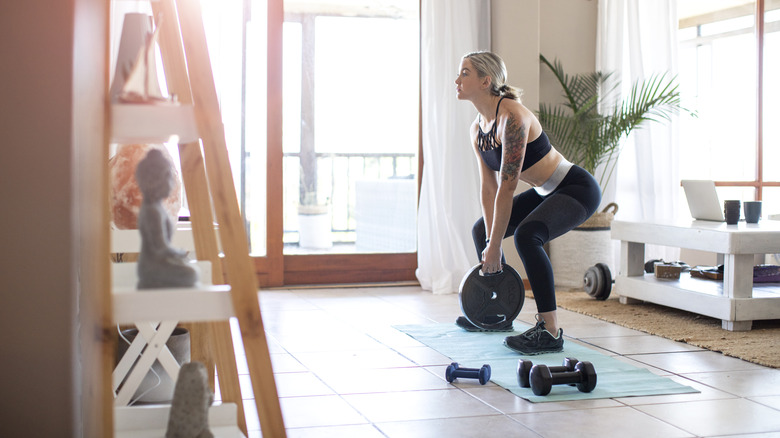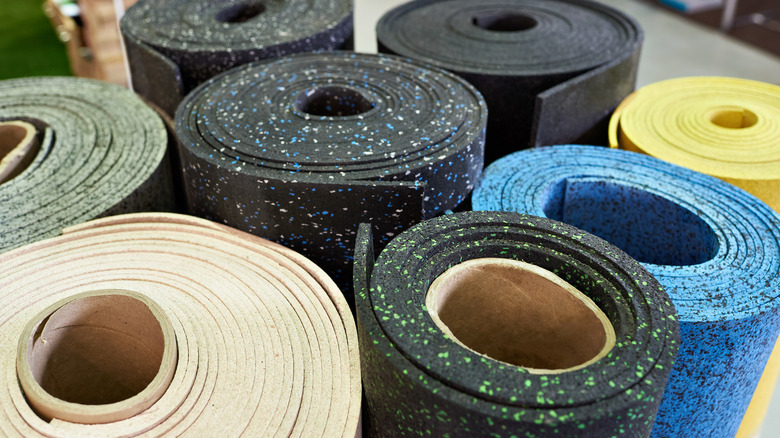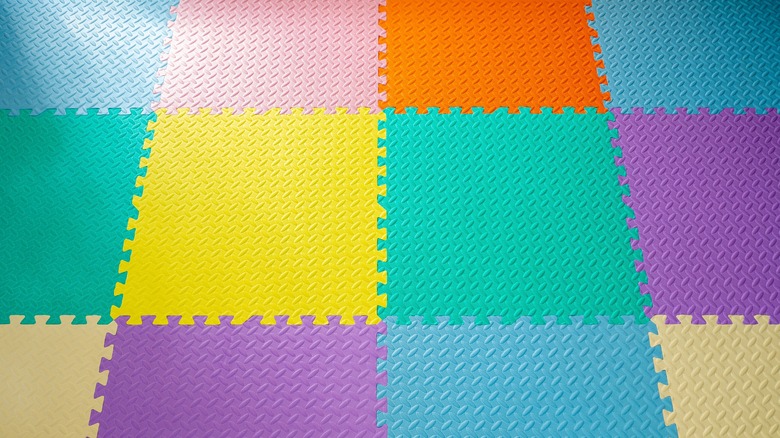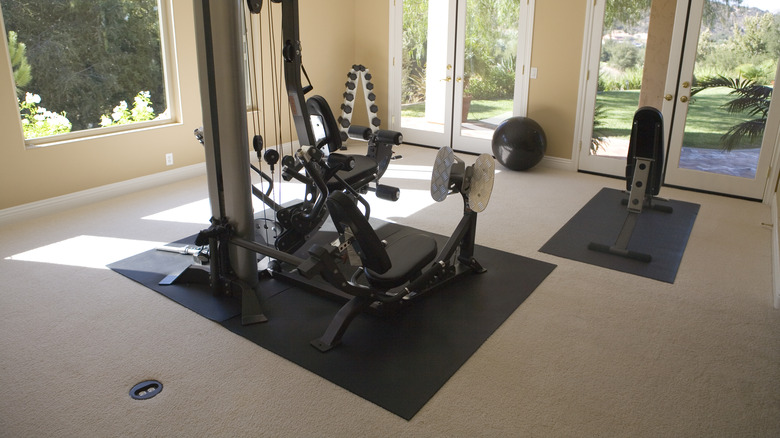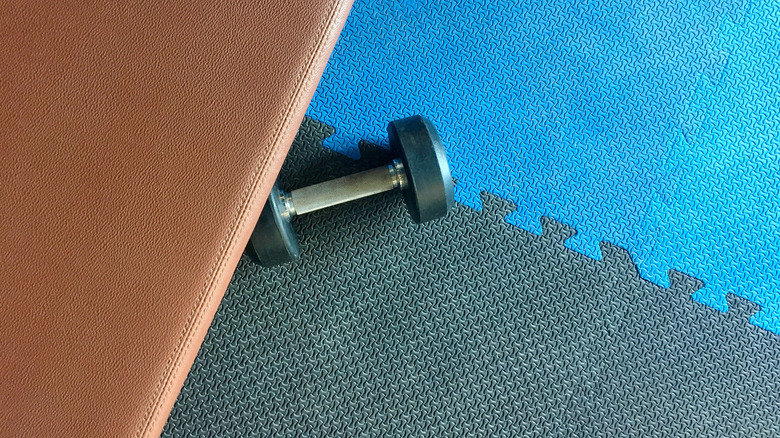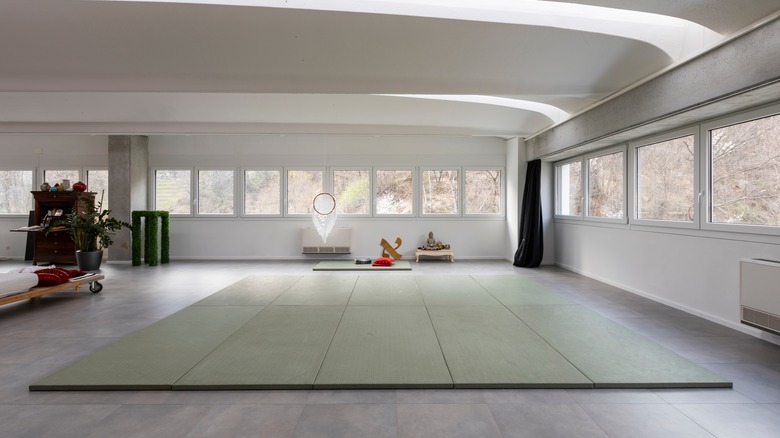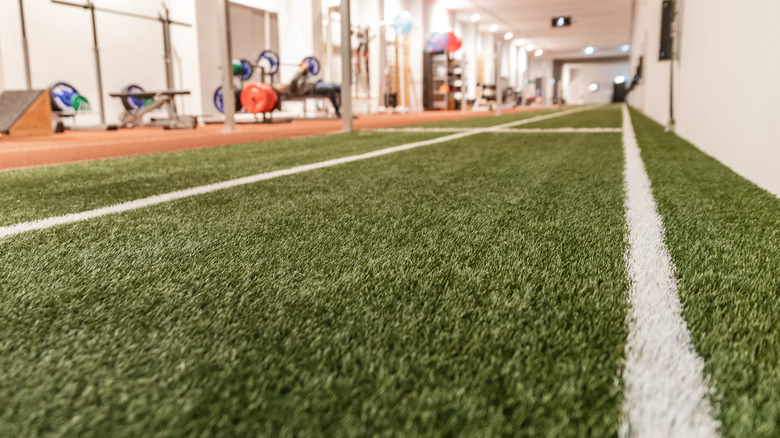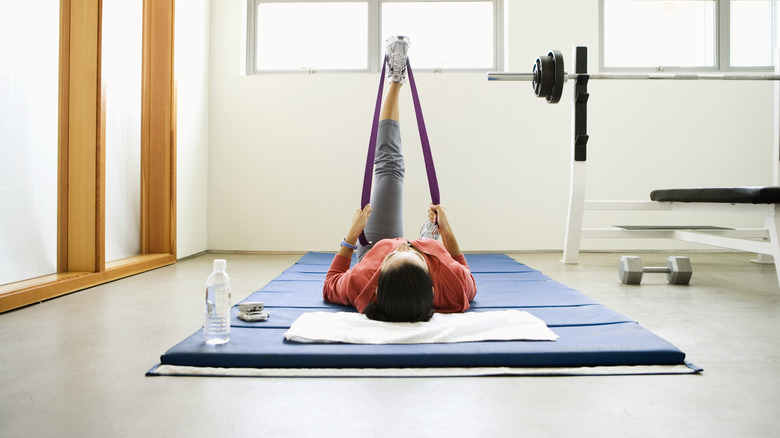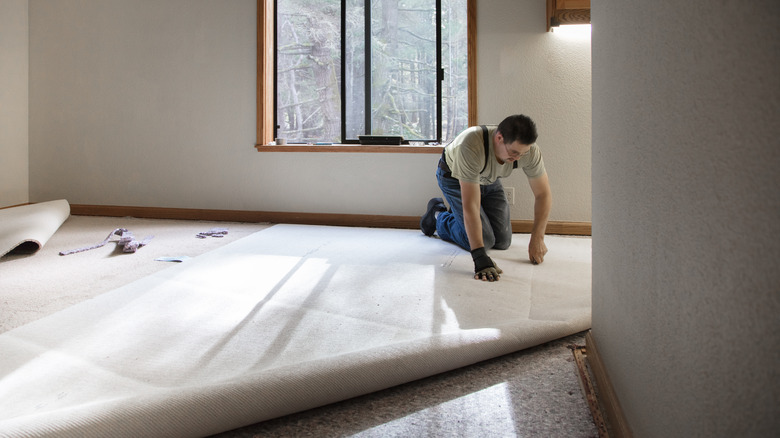The Best Kind Of Floors To Put In Your Home Gym
We may receive a commission on purchases made from links.
If you have some extra space in your home and you're looking to save some money on an expensive gym membership, converting a spare room or unused area into a home gym is a great option. Having your own workout space can help to make your daily burn more convenient, ensure that you feel more comfortable exploring new exercises, and allow you to fully customize your experience to your liking. The problem, however, is that many people don't consider what it takes to create the perfect home gym. Sure, workout machines, a sound system, and smaller pieces like free weights and tension bands can get you started on the right foot, but choosing the correct flooring can guarantee that your space stays as safe, comfortable, and clean as a professional gym.
What kind of flooring you should choose for your home gym is entirely dependent on what kind of exercises you intend to do most often, what your renovation budget is, how much space you need to cover, and how frequently you want to use the room. After a bit of research, you'll be able to narrow down the wide selection of flooring options available on the market in order to choose something that will help you improve your overall experience. To help you do this, we've listed eight of the best materials below.
1. Rubber rolls
If you've been going to a traditional gym, you're likely already familiar with rolled rubber flooring. This option is one of the most cost-effective choices for heavy-duty flooring, especially if you're planning on covering a large area. It's also a solid choice if you're looking for something that's permanent and won't shift around, as it's quite heavy when installing and moving. However, if you're planning to use your spare room as a flex space that's also an office or guest bedroom, you might have better luck with something more lightweight that comes in smaller pieces.
2. Foam tiles
Foam-tiled flooring might be a daycare staple, but that doesn't mean that it's only useful for kids. These inexpensive tiles provide just enough cushion so you can comfortably jump, squat, stretch, and drop weights without injuring yourself or making a ton of noise, and they're easy to pick up and remove when they're no longer needed. However, the problem with many foam tiles is that they're not as durable as other options. This isn't a problem if you do yoga and bodyweight exercises, but it may be an issue if you're planning on doing CrossFit or heavy lifting.
3. Exercise equipment mats
In a gym setup that's primarily focused on heavier machines, your top priority should be keeping your carpet, tile, or wood flooring looking like new. In a situation like this, you likely don't need a full room's worth of material. Instead, an exercise equipment mat can protect your flooring, level out inconsistencies if you're working with carpet, and prevent any unwanted movement or shifting. If you're having a hard time finding a gym mat you like, you can also look to other options, like this Thick Rubber Stall Mat that's 4 by 6 feet from Tractor Supply.
4. Rubber tiles
For people that need both durability and flexibility for a multi-use space, rubber tiles might offer a solution. Rubber tiles can create some issues if you're going for a seamless look, but they're one of the few options that are both heavy duty and easily removable. Of course, rubber is still going to be fairly heavy, so this might not be the best choice for spaces you switch every day. At the same time, smaller tiles are significantly easier to handle than large-scale rubber rolls, especially if they have been taped or glued down.
5. Foam mats
If you have a home gym that needs the ability to become a guest room or office at the drop of a hat, a foam mat is going to be the one of the most convenient flooring choices for you. These mats are essentially extra large durable yoga mats that can be easily rolled up and stored away. They're also fairly low cost — this MRO Large Exercise Mat that's 7 by 5 feet is available on Amazon for about $160. Further, if they're thin enough, they can be concealed under an area rug and double as everyday cushioning.
6. Turf flooring
Turf flooring might feel like something reserved for sports stadiums and high-end training facilities, but if you have the space, it's a great home gym option. Turf is made of artificial grass with a slightly cushioned underlay, so it's a solid choice if you need a material to help cushion the impact of dropped weights, running, and jumping. The textured surface also provides more traction than smoother options like rubber mats, so you can more freely jump, run, and turn without worrying about the possibility of slipping, especially if you're working up a sweat.
7. Gymnastics mats
Similar to foam mats, gymnastics mats are a good choice for transitional spaces and those who prefer lower-impact exercises. Specifically designed to be rolled up and stored away, their relatively-thick material provides cushion for workouts like pilates or yoga where you might need to get down on your knees or lay on your back. They're also great for tumbling or martial arts where you need to ensure you're protected from falls. However, they do have some downsides, as gymnastics mats can get slippery, often move around on the ground, and are much less durable than options like rubber.
8. Carpet
Sometimes, it's best to stick with the classics. Carpeting might not be your first choice for a home gym, but many professional gyms still utilize low-pile carpeting in their spaces because of its durability, padding, and comfort. If you already have low-pile carpet in the room you're planning to transition into a home gym, consider utilizing it instead of ripping up the flooring and starting fresh. However, if you're currently working with wood or concrete, you can explore easy-to-install options like carpet tiling if you'd rather avoid the look of rubber flooring in your space.
